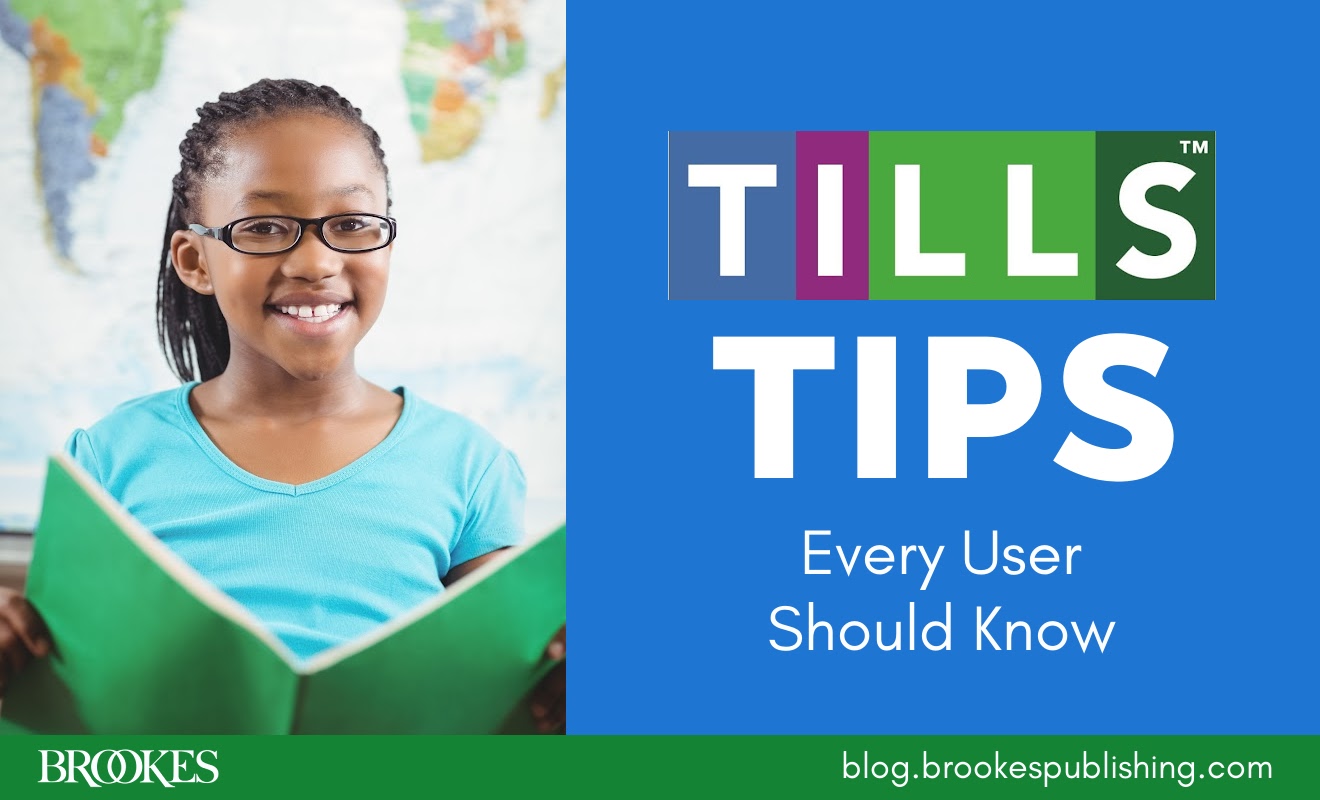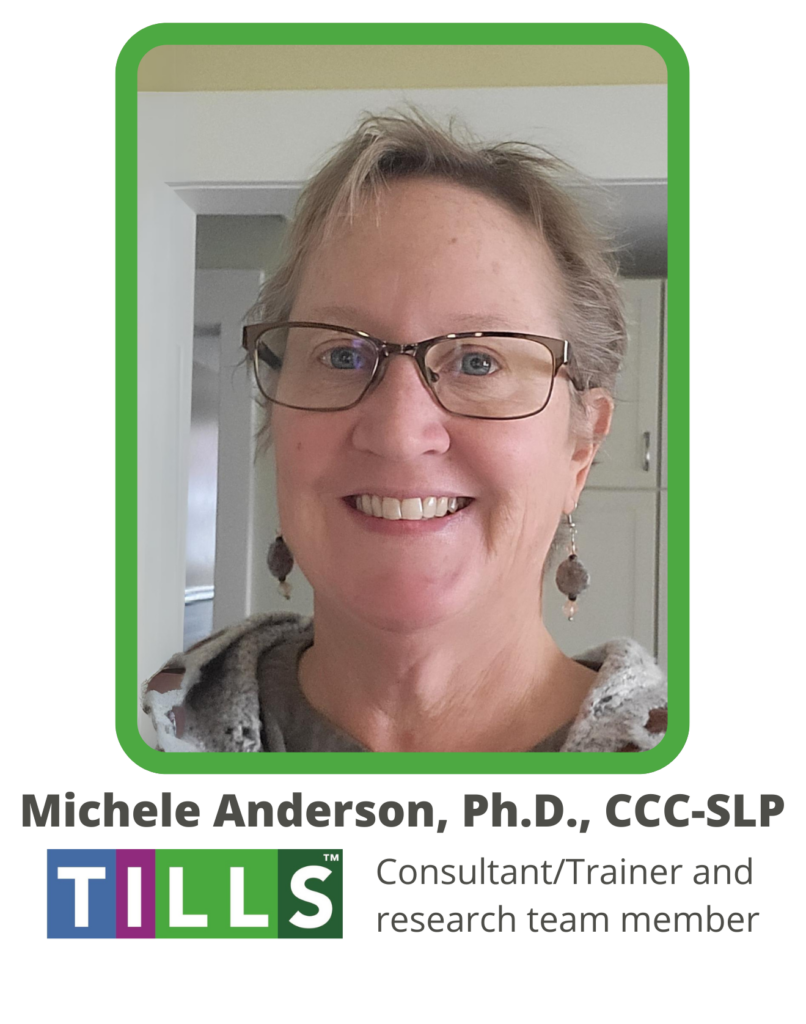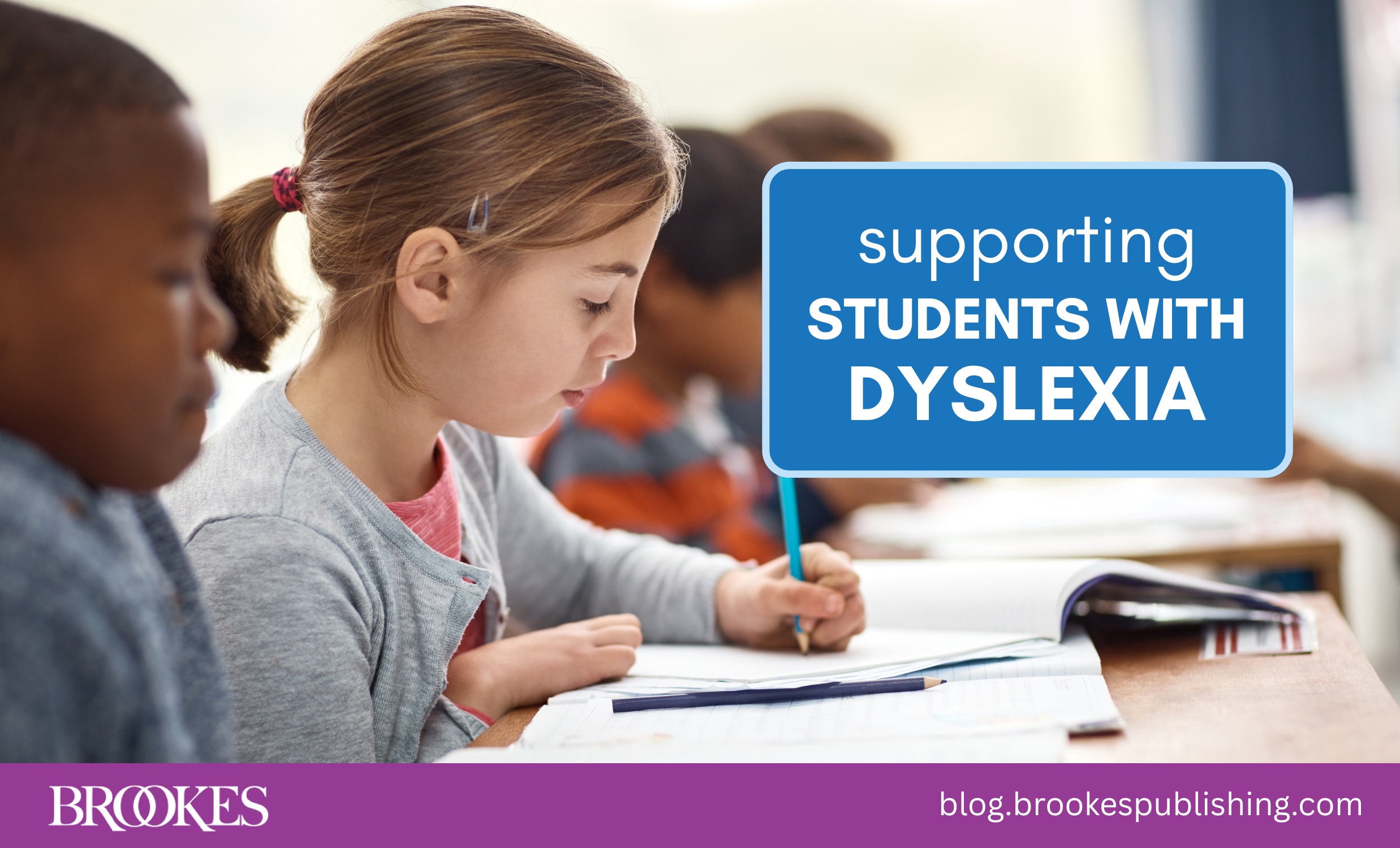5 TILLS Tips Every User Should Know
July 11, 2024
 If you’re a TILLS™ user, today’s guest post is for you! Michele Anderson, Ph.D., CCC-SLP, TILLS Consultant/Trainer and research team member, is here to share 5 important TILLS tips for every user of this trusted assessment of oral and written language skills. Adapted from this popular webinar, the tips in today’s post will help you administer TILLS accurately and efficiently with students ages 6–18.
If you’re a TILLS™ user, today’s guest post is for you! Michele Anderson, Ph.D., CCC-SLP, TILLS Consultant/Trainer and research team member, is here to share 5 important TILLS tips for every user of this trusted assessment of oral and written language skills. Adapted from this popular webinar, the tips in today’s post will help you administer TILLS accurately and efficiently with students ages 6–18.
TIP 1: Get all subtests administered efficiently
Be strategic to be able to get all subtests administered as efficiently as possible to make the best use of composite scores and the quadrant model. Here are some things to do:
- Use a recording app to minimize the need for writing during testing. This is especially helpful for the subtests Vocabulary Awareness, Story Retell, Delayed Story Retell, and Social Communication.
- During Vocabulary Awareness, allow saying “I don’t know” when it is clear the student does not know an answer. You may also want to allow the student to turn the pages of the stimulus book while you write.
- Stop the Written Expression subtest after 20 minutes with a prompt such as, “Let’s finish this sentence you’re on.”
- Keep in mind that although you may not have time to give all subtests in one session, not giving all subtests will limit the ability to use the composite scores and get a complete profile of strengths and weaknesses. When all subtests are completed within 6 weeks, the norms can still be used. (Here’s a helpful infographic that shows recommended subtest orders if you’re giving TILLS in 2 or 3 sessions.)
TIP 2: Understand TILLS percentile ranks
Most assessments provide standard scores and “percentiles.” However, not all percentiles are the same. The percentiles that are always equivalent to a specific standard score, such as SS 100 = 50th percentile, are known as Normal Curve Equivalent (NCE) percentiles. These are the ones many tests provide.
The problem is, developmental skills—of which language is one—are often only normally distributed at a very small window of ages. For example, an elision task for 5-year-olds may be drastically skewed because even for typically developing 5-year-olds, they are missing them all. By the time a child is 10, we will see skewing in the opposite direction, because very few are missing any items. Thus, NCE may not be appropriate for most developmental language skills at many ages, as they violate the assumption of normal distribution.
TILLS solves this problem by going back to the child’s raw score and telling you where that score ranked in comparison to the 100 participants in the normative sample for that subtest and at that age. This is why you will see scores that vary compared to the standard score. A standard or scaled score of 7 on one subtest may have a percentile rank of 22, while that same score of 7 on a different subtest or for a different age on the same subtest may be a 4.
TIP 3: Use TILLS and SLS together to help make a correct diagnosis
The Student Language Scale has proven quite useful in recognizing when a problem is present even though scores have fallen above the TILLS cut score. Patterns of strengths and weaknesses won’t be evident if only the subtests required for the Identification Core Score are given. Gather the multi-perspective input from teachers, parents, and perhaps the student before testing. It will help inform what you do. Remember, it’s part of IDEA law as well as best practice.
TIP 4: Consider low SES cut score adjustment
Tests don’t diagnose—clinicians do. If you’re working with a student and your clinical judgment determines that the differences you’re observing don’t appear to be language impairment but perhaps due to the impact of low SES, you may adjust the cut score. (Check the TILLS Technical manual to see the evidence-based adjustments that were determined for the three age groups to help minimize overidentification. The differences were not evident until age 8.)
TIP 5: Use the quadrant model to guide selection of goal area
With TILLS, you have the power of using the evidence-based factors of sound/word structure knowledge and sentence/discourse knowledge to help determine if your student’s profile presents as developmental language disorder (DLD), dyslexia, or both. Research is showing that we can expect about half of children traditionally labelled as dyslexic to also have DLD characteristics (vocabulary weakness and comprehension/expression deficits). Also, about half the children identified as DLD will also show symptoms of dyslexia (reading decoding and spelling difficulties). With its quadrant model, TILLS can help clarify the picture.
Watch the full webinar. Want more TILLS tips? View the recorded webinar 10 TILLS Tips Every User Should Know: How to Administer, Score, and Interpret Results Like an Expert, presented by Nickola Nelson, Ph.D., CCC-SLP (TILLS lead developer and widely published and cited researcher/clinician) and Michele Anderson, Ph.D., CCC-SLP (TILLS Consultant/Trainer and research team member).
Learn more about TILLS. TILLS is the assessment that SLPs, educators, and reading specialists rely on to test students’ oral and written language skills and identify language and literacy disorders. Visit the dedicated TILLS website for information and resources specially tailored to the needs of existing TILLS users and those new to the assessment.




Write a Comment
Your email address will not be published. Required fields are marked *
Post a Comment